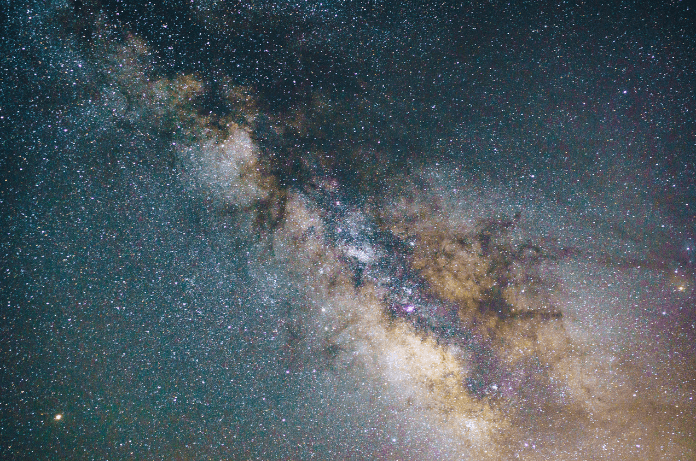Imagine holding a time capsule that’s traveled billions of miles, unchanged for over 4.6 billion years. These capsules, small icy bodies known as trans-Neptunian objects (TNOs), orbit the Sun far beyond Pluto, preserving invaluable secrets about the early days of our solar system. For the first time, scientists have managed to crack open these ancient cosmic vaults to reveal the icy, colorful diversity hidden within them.
The study led by researchers at the University of Central Florida and findings published in Nature Astronomy shed light on how these distant ices formed and evolved. Using the powerful James Webb Space Telescope (JWST), scientists now have a clearer picture of what these mysterious bodies are made of, and how they transform as they move closer to the Sun, becoming what we know as centaurs. This discovery not only deepens our understanding of the solar system’s past but also highlights the dynamic journey these objects undertake.
What Are Trans-Neptunian Objects (TNOs)?
TNOs are small, icy bodies, often described as “pristine time capsules.” They orbit beyond Neptune, remaining largely unchanged since the solar system’s formation. These ancient relics, which never formed into full-fledged planets, preserve molecular evidence from billions of years ago.
Before this groundbreaking UCF-led study, TNOs were known for their variety of orbits and surface colors. However, the exact composition of these objects remained a puzzle. Now, thanks to the JWST, scientists have identified specific molecules on their surfaces molecules like water ice, carbon dioxide, methanol, and complex organics that give TNOs their diverse colors and reflectivity.
Lead researcher Noemí Pinilla-Alonso explains: “For the very first time, we have identified the specific molecules responsible for the remarkable diversity of spectra, colors, and albedo observed in trans-Neptunian objects.”
The Three Types of TNOs: A Frozen Spectrum
Using JWST data, the team analyzed 54 TNOs and categorized them into three distinct compositional groups, each with unique absorption patterns:
- Bowl-Type TNOs (25% of the sample)
These objects exhibit strong water ice signatures and a dusty surface. They have low reflectivity due to dark, refractory materials. - Double-dip TNOs (43% of the sample)
Characterized by prominent carbon dioxide (CO₂) bands and traces of complex organic compounds. - Cliff-type TNOs (32% of the sample)
The reddest of the bunch, these TNOs are rich in complex organics, methanol, and nitrogen-bearing molecules.
These classifications provide a clearer roadmap of where these icy bodies formed within the protoplanetary disk and how temperature gradients influenced their compositions.
Centaurs: The Cosmic Travelers
When TNOs move inward toward the giant planets, they become centaurs’ dynamic bodies caught in the gravitational dance between Jupiter and Saturn. Centaurs often develop comet-like tails as they warm up, offering a rare glimpse into the transformation of icy bodies as they experience a hotter environment.
The complementary study on centaurs, also published in Nature Astronomy, revealed even more surprises. The team observed five centaurs (including 52872 Okyrhoe, 3253226 Thereus, and 2010 KR59) and discovered that these objects have distinct surface characteristics compared to TNOs.
Javier Licandro, senior researcher from the Instituto de Astrofisica de Canarias (IAC), notes: “The diversity detected in the centaur population in terms of water, dust, and complex organics suggests varied origins and different evolutionary stages, highlighting that centaurs are not a homogenous group but dynamic and transitional objects.”
Interestingly, two centaurs, Thereus and 2003 WL7, fall into the Bowl-type category, while 2002 KY14 belongs to the Cliff-type. But here’s the twist: Okyrhoe and 2010 KR59 didn’t fit into any existing categories. They were classified as a new type the “Shallow-type” featuring a surface covered with primitive comet-like dust and a lack of volatile ice.
A Deeper Connection Between TNOs and Centaurs
The findings are profound. When a TNO becomes a centaur, it undergoes surface changes due to the warmer environment. However, some centaurs retain enough of their original characteristics to be linked back to their parent TNO population.
Charles Schambeau from UCF’s Florida Space Institute highlights this significance:
“When a TNO into a centaur, surface ices and materials change due to the warmer environment. But in some cases, these changes are minimal, allowing us to trace individual centaurs back to their origins.”
This means centaurs serve as a bridge, helping us understand the transformation of outer solar system bodies and connecting TNOs to other small body populations like cometary nuclei and Trojan asteroids.
Why This Matters: Understanding Our Solar System’s History
These discoveries are more than just fascinating details they provide critical insights into how our solar system formed and evolved. The identified molecules and surface types help scientists reconstruct the conditions of the protoplanetary disk and the role of temperature in shaping planetary bodies.
Brittany Harvison, a UCF doctoral student, puts it into perspective: “This supports our understanding of the material that formed gas giants, their moons, Pluto, and other trans-Neptunian objects.”
The journey doesn’t end here. With the data gathered from these studies, scientists now have a foundation to explore further, answering deeper questions about the formation and evolution of these icy bodies.

